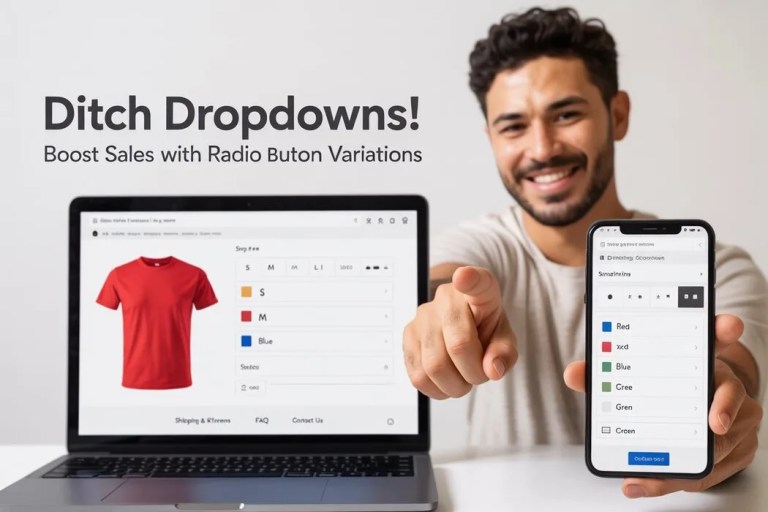6 Tips for Creating an Effective Website CTA
A call to action is an essential part of your website. A CTA guides a customer through different stages of your marketing funnel and provides clear instructions on what steps to take next. In other words, it makes the difference between losing a lead and making a sale.
To transform website visitors into leads and customers, a CTA needs to be to the point, relevant, helpful, and persuasive.
Here are a few tips for creating high-converting CTAs and delivering measurable results.
1. Design a CTA that Stands out
Design is a critical aspect of your CTA button’s performance. The goal is to make it attention-grabbing, easy-to-spot, and prominent on your website. Here are a few tips to follow:
- Use a lot of white space so your CTA button can stand out.
- Choose contrasting colors to draw users’ attention. However, make sure the CTA button design remains natural and pleasant to the eye.
- Pay special attention to the size of the CTA button. It needs to be large enough, and yet, it should not seem too overwhelming and aggressive.
- Optimize your CTA for mobile devices. Make them a central part of your mobile website and keep them big enough so mobile users can easily hit them.
2. Insert Urgency
A week ago, one of my favorite freemium SaaS brands notified me about a discount on its premium service. Since the offer was about to expire, I clicked on the CTA button and immediately upgraded my plan.
This example only proves how critical FOMO (fear of missing out) is for your marketing strategy. Not wanting to miss out on your offer, your customers will be willing to convert fast. Now, there are many ways to insert urgency and scarcity into your CTAs:
- Use time-related phrases, such as “start now,” “sign up today,” and “the sale ends tomorrow,” to emphasize that your offer does not last forever.
- Use action words, such as “Join the webinar today,” to tell users what their next steps should be. Phrases like “limited” or “last chance” will also encourage customers to convert.
- Add a countdown timer to emphasize urgency and prompt users to act fast.
3. Turn your Domain Name into a CTA
One of the most unconventional, and yet effective, CTA techniques is choosing a TLD that transforms your domain name into a call to action.
For example, many websites use .me rather than the traditional .com domain extension. This country-code TLD feels more personal, creative, and persuasive. Most importantly, it can be used in a variety of languages, from English to Portuguese.
Let’s take the example of Label.me, an advanced digital solution designed to help brands fight piracy and product counterfeiting. They use the “.me domain” extension to keep their domain name short and straightforward, letting users know what their service is about. It is also more memorable and brandable than labelme.com. Finally, with .me, their entire brand name is transformed into a call to action, inviting you to sign up for their product.
4. Gamify User Experiences
A CTA needs to grab a user’s attention, engage them, and motivate them to convert. It should evoke their curiosity and trigger anticipation. Precisely because of that, using your CTAs to gamify user experiences is the right option for you.
For example, many SaaS brands use spin-to-win popups on their websites. By adding a persuasive CTA, such as “Try Your Luck,” you would engage a user and inspire them to play. This approach may serve as a powerful lead-generation tactic. Namely, to unlock the reward, a user needs to hit the CTA button and sign up.
5. Personalize your CTAs
Hyper-personalization penetrates almost every aspect of your digital marketing strategy, including CTA creation. Research studies found that personalized calls to action convert 202% better.
Your CRM software plays a fundamental role in CTA personalization. Namely, the goal is to map out customers’ behaviors at each stage of the buyer journey and change your CTAs accordingly. Therefore, instead of having a single CTA that is the same for all visitors, you will create a call to action that adapts based on a user’s location, browser language, or stage in a sales funnel. For example, you could create different CTAs for first-time website visitors, leads, and repeat customers.
6. Keep A/B Testing your Calls to Action
It is highly unlikely that you will design a spotless call to action right off the bat. Instead, you need to experiment with different forms of CTAs until you find the one that resonates with your target audience.
Unfortunately, trusting your gut is not enough to create a CTA that delivers results. Instead, you need to perform A/B tests to test the effectiveness of your calls to action and see which version converts the best.
Now, do not change multiple elements of a CTA at once. Instead, choose clear variables to compare, such as the CTA color, placement, shape, or text.
Over to You
There is no one-size-fits-all approach to creating compelling CTA buttons. You need to experiment with different styles and perform A/B tests to identify the call to action that engages and converts. Above all, do not forget to personalize your CTAs.
How do you create compelling calls to action for your website? We are listening!







